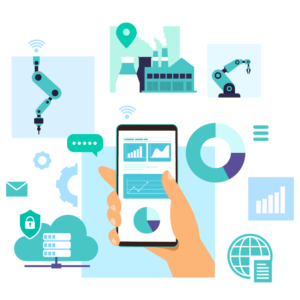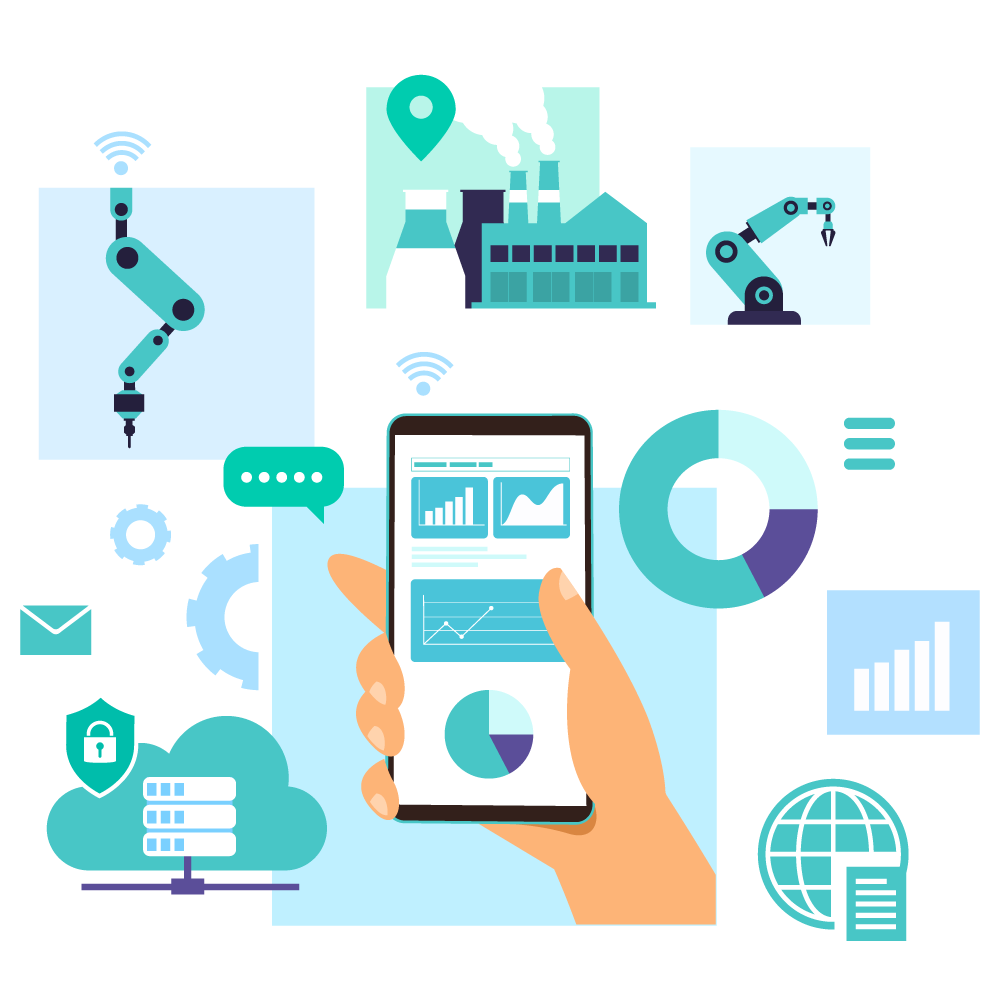Automation in Modern Industries
In today’s fast-paced, technology-driven world, Automation in Modern Industries has become a cornerstone of modern industry. From manufacturing to healthcare, and even in the service sector, automation is revolutionizing the way businesses operate. By replacing manual processes with automated systems, industries are achieving unprecedented levels of efficiency, productivity, and innovation. In this blog post, we’ll explore the significant role Automation in Modern Industries and how it continues to shape the future of work.

1. What is Industrial Automation?
Overview: Industrial automation refers to the use of control systems, such as computers or robots, and information technologies to handle different processes and machinery in an industry. It minimizes human intervention and enhances the efficiency, speed, and accuracy of production processes.
Key Components:
- Control Systems: Programmable Logic Controllers (PLCs), Distributed Control Systems (DCS), and Supervisory Control and Data Acquisition (SCADA).
- Robotics: Industrial robots performing tasks such as welding, painting, and assembly.
- Artificial Intelligence: AI algorithms that analyze data and optimize processes.
Why It Matters: Automation enables industries to achieve higher productivity and reduce operational costs, making it a vital component of modern industrial operations.
2. The Impact of Automation on Manufacturing
Overview: Manufacturing is one of the sectors most profoundly impacted by automation. From the assembly line to quality control, automation has revolutionized the way products are made, resulting in faster production times, reduced errors, and lower costs.
Key Examples:
- Automated Assembly Lines: Robots and automated systems assemble products with precision and speed, reducing the need for manual labor.
- Quality Control: Automated systems use sensors and cameras to detect defects, ensuring consistent product quality.
- Supply Chain Automation: Automated systems manage inventory, order processing, and logistics, streamlining the supply chain.
Why It Matters: Automation in manufacturing leads to higher output, improved quality, and the ability to produce complex products with greater efficiency.
Also Read: The Future of Manufacturing
3. Automation in Healthcare: Enhancing Patient Care
Overview: Automation is also playing a crucial role in the healthcare industry. From robotic surgeries to automated diagnostic tools, automation is helping healthcare providers deliver better care, faster, and more accurately.
Key Examples:
- Robotic Surgery: Robots assist surgeons in performing complex procedures with precision, reducing recovery times and improving outcomes.
- Automated Diagnostics: AI-powered diagnostic tools analyze medical images and data to provide accurate diagnoses, helping doctors make informed decisions.
- Patient Management Systems: Automated systems manage patient records, appointment scheduling, and billing, streamlining administrative tasks.
Why It Matters: Automation in healthcare improves patient outcomes, reduces the workload on healthcare professionals, and increases the overall efficiency of healthcare delivery.
Also Read: Automation in Healthcare
4. Automation in the Service Industry: Improving Efficiency
Overview: The service industry, including sectors like retail, hospitality, and finance, is also embracing automation. From chatbots providing customer service to automated financial transactions, automation is enhancing service delivery and customer satisfaction.
Key Examples:
- Chatbots: AI-powered chatbots provide instant customer service, answering queries and resolving issues without human intervention.
- Automated Payment Systems: Automated systems handle financial transactions, reducing the need for manual processing and minimizing errors.
- Inventory Management: Automated systems track inventory levels in real-time, ensuring optimal stock levels and reducing waste.
Why It Matters: Automation in the service industry leads to faster, more reliable service, improving customer satisfaction and reducing operational costs.
Also Read: Automation in Retail
5. The Role of AI and Machine Learning in Automation
Overview: Artificial Intelligence (AI) and Machine Learning (ML) are at the forefront of the automation revolution. These technologies enable machines to learn from data, make decisions, and perform tasks without human intervention.
Key Applications:
- Predictive Maintenance: AI algorithms predict equipment failures before they occur, allowing for timely maintenance and reducing downtime.
- Process Optimization: Machine learning models analyze data to optimize industrial processes, improving efficiency and reducing waste.
- Autonomous Systems: Self-driving vehicles, drones, and automated machinery are transforming industries like logistics and agriculture.
Why It Matters: AI and ML are driving the next wave of automation, enabling smarter, more adaptive systems that can improve productivity and reduce costs across industries.
Also Read: Intelligent Automation In AI and Machine Learning in Industry
6. Challenges and Considerations in Implementing Automation
Overview: While automation offers numerous benefits, implementing it comes with challenges. These include the high initial costs, the need for skilled labor to manage and maintain automated systems, and the potential impact on employment.
Key Challenges:
- High Costs: The initial investment in automation technology can be significant, requiring careful planning and budgeting.
- Skill Gaps: Workers need to be trained to operate and maintain automated systems, which can be a challenge for industries facing skill shortages.
- Impact on Jobs: Automation can lead to job displacement, particularly in roles that involve repetitive tasks.
Why It Matters: Addressing these challenges is crucial for businesses to successfully integrate automation into their operations while minimizing negative impacts on the workforce.
Also Read: Challenges of Industrial Automation
7. The Future of Automation in Industries
Overview: The future of automation is bright, with advancements in AI, robotics, and IoT (Internet of Things) paving the way for even more sophisticated automated systems. These innovations will continue to reshape industries, driving efficiency, innovation, and economic growth.
Key Trends:
- Collaborative Robots (Cobots): Robots designed to work alongside humans, enhancing productivity and safety.
- Smart Factories: Fully automated factories using IoT, AI, and robotics to optimize production processes in real-time.
- Autonomous Vehicles: Self-driving cars and drones transforming logistics, transportation, and agriculture.
Why It Matters: Staying ahead of these trends is essential for businesses to remain competitive in an increasingly automated world.
Also Read: The Future of Industrial Automation
Conclusion: Automation in Modern Industries
Automation is revolutionizing modern industries, driving efficiency, productivity, and innovation. From manufacturing and healthcare to the service sector, the role of Automation in Modern Industries cannot be overstated. As technology continues to advance, businesses that embrace automation will be better positioned to thrive in the competitive global market. However, it is also essential to address the challenges that come with Automation in Modern Industries, ensuring a smooth transition and maximizing its benefits.
More to Explore
- Top 10 Skills Every Tech Professional Should Have in 2024
- The Best Software for Remote Collaboration in Distributed Teams
- How to Choose the Right Operating System for Your Needs
Related
Discover more from Computer Climax
Subscribe to get the latest posts sent to your email.






One Response